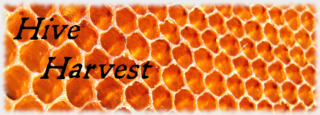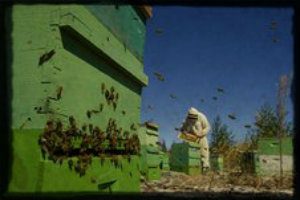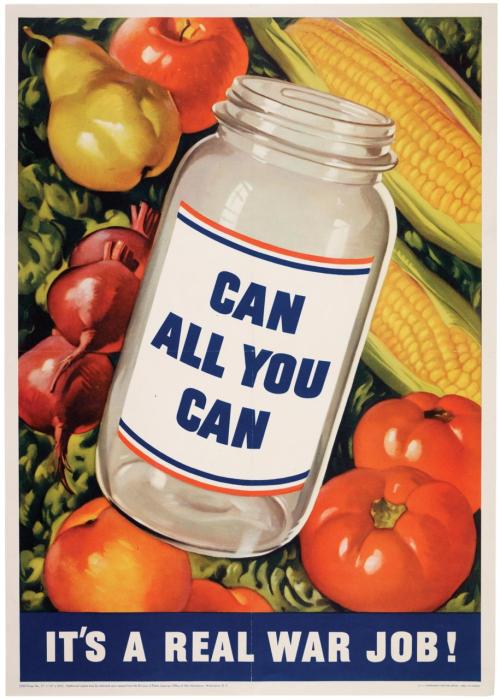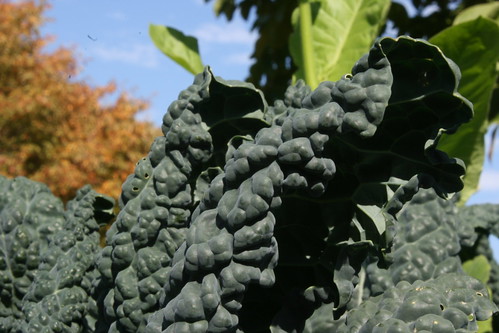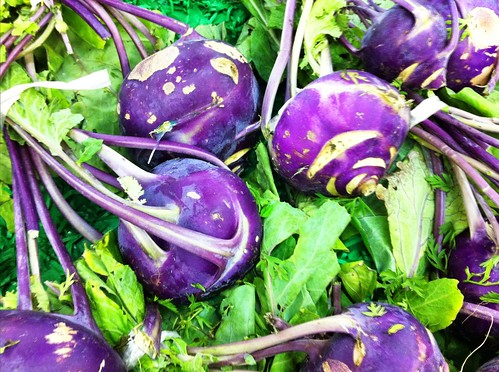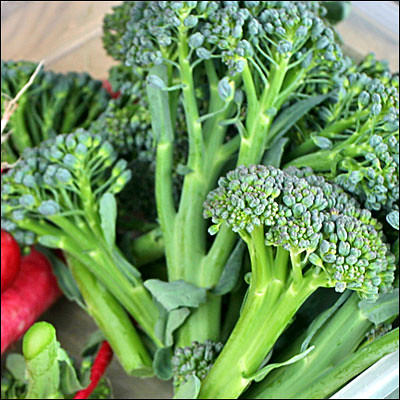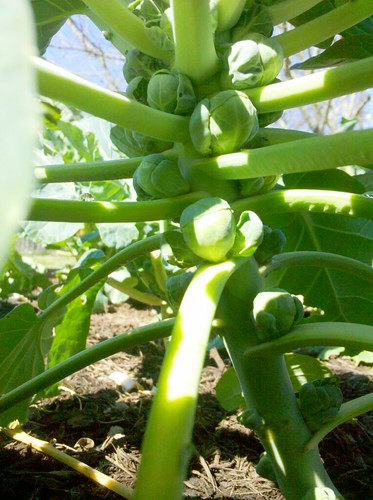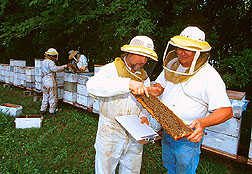 Loading... Please wait...
Loading... Please wait...- Home
- Blog
Blog
The Victory Garden 1941
This was produced before America formally entered the war. This garden is huge for a family of 4 or 5 pictured. It was probably the idea to grow far more than needed to feed the neighboring community. Apparently all of the dust masks were being used for the war effort, so young Dick is inhaling all of those pesticides. No mention of compost; and the weeds that they mention; lambs quarter and amaranth are often being eaten now by foragers. Remember, no garden, no victory. Being threatened with the loss of freedom by gaining food freedom seems such innocuous propaganda.
1
Turning Honeycombs into Wax the Traditional Way
A traditional German apiary processes the honeycombs into cleaned beeswax. The extent of electricity being used is to light the work area. These methods have been used for centuries to make wax for candles when candles where one of the few forms of illumination.
DIY Top Bar Hive; Recycled Barrel
Created with Admarket's flickrSLiDR.
This is a brilliant idea to repurpose an old food grade barrel. This makes two top bar hives. Full Directions can be found here: http://www.velacreations.com/honeycow.html
New Bee Variety; Virtually Stingless and a Hardy Producer
These gentle bees that rarely sting are isolated in mountain valleys in the Caucasus. They have the longest proboscis of any bee giving them an advantage in nectar production. Not available in the US yet but this hardy but docile bee would be great for the urban back yard beekeeper.
Best Method to Make Sauerkraut.
I have tried the crock method to make my sauerkraut, but the mason jar and ziplock bag of brine method has given me the least amount of fuss. I found this video to be the most instructive in this method. I usually forgo canning to keep the probiotic effects of fresh kraut. It keeps well in the fridge so I don't find canning necessary.
Urban Beekeeping in New York City
Urban farming continues to grow a mainstream following.
One Million People Sign Emergency Petition to Ban Bee-Killing Nicotine Pesticide Illegally Registered in Us
Word is getting out there of collateral damage from nicotine based pesticides. The ground swell of attention is surprising considering overall knowledge of our food supply here in America by the average citizen.
An in Depth look into Beekeeping with the Warre Hive (Top Bar)
Warre - Beekeeping For All
Organic Monoculture; Sustainable?

While the production numbers are impressive and the growth in organic crops is a huge positive, look at some of the production numbers. 87% of the apples, 81% of the cherries and 78% of the pears are coming from one state. One state that is in the corner of the country. Meaning about 87% of the apples are being shipped from one place. This can demonstrate how a rise in oil prices can propagate higher food prices even if the crops are being produced without large petrochemical inputs like conventional agriculture. Moving 200K tons of apples may be fine at $100 a barrel oil, but is it sustainable at $150 or even $200?
This shows that the sustainability of organic may end once the crops leave the farm, and the system of truck farming and massive economies of scale may only work to drive down food prices as long as oil prices stay stable and low. Growing in less than optimal climates may be the future of agriculture to off set higher fuel costs if we go into another oil shock.
Seeds of Life
Home Gardening by the Numbers
The Problems of Society are Problems within the Human Mind.
Nick Titar speaks on permaculture and changing the way we think.
Suburban Homestead
It should say how much land you need to live off of with a typical American diet.
Compared with what some urban homesteaders are able to get away with this seem like more than enough land. Mind you, the chart looks more like mimicking conventional agriculture and crops than what could be optimized in ones own climate zone. An aquaponic operation would cut down on the square footage dramatically and increase the protein production as well. Rabbits en lieu of chickens for protein and adding bees for honey and pollination would cut inputs (feed) and boost production with the bonus of extra calories from honey.
Protecting National Security
Here is a WW II poster from the National Archive encouraging food storage for the war effort. Today we have record enrollment on food stamps yet not a widespread government campaign for backyard food production.
The Cost of Lawns
Some interesting perspective on the cost of planting lawns at the detriment of producing food.
GMO Factsheet
You can look at this from many angles. Are there health concerns? Are there environmental concerns? Are we comfortable with the idea of being able to patent food?
Urban Honey from Hong Kong
Dwindling Crop Varieties
From this months National Geographic
Urban Bee Swarm
Tupelo Honey Harvest
Thank our ancestors we are not starving.
Right now it is easy to see how dependent we are on modern technology to keep the world fed. Larger, productive farms replacing subsistence farming around the world. These practices for better or for worse keep mouths fed and bellies full.
But step back for a moment, just as the world couldn't have succeeded in growing the population to such enormous levels without improvements in farming methods, we wouldn't be here if it were not for our ancestors.
Many crops were domesticate through thousands of years of selective breeding and only exist today due to human intervention. Take the brassica family:
About 2000 years ago Brassica oleracea was first domesticated and grown in Mediterranean gardens. Growers kept seeds of the larger leafed plants and eventurally it became to what we know as kale today. Following the developement of kale growers selected ever and ever more tight bunches of leaves at the top of the plant that in turn led to the formation of heads of cabbage over successive generations of selection.
About the same time cabbage came into existance successive growing of large rooted kale plants led to kohlrabi.
Later with a penchant for eating the flowering buds of the plant growers later developed cauliflower and broccoli.
Still later after that in Belgium the selection smaller buds on cabbage led to the cultivation of brussel sprouts.
So between 2000 years ago and 300 years ago 6 distinct vegetables were painstakingly developed by our ancestors. This is but one plant that developed into several food crops, 2000 years in the making. The full girth of this worlds population weighed heavily on the shoulders of our ancestors, without them we would probably not have variety cultivars to grow in many parts of the world and we would not have the variety to as easily make a balanced diet.
Talking to Strangers: honey birds
This is amazing that a wild bird becomes so tame and willing to help fetch honey. If I could only find an eagle that would help me fish.
Who Killed the honeybee.
Great piece by the BBC on the die off of honeybees worldwide. When trying to get to the bottom of what is going on I particularly like the analogy of going to the pharmacist and being asked what other medication you are taking to find out if there could be any negative interactions. I think this approach gets to the crux of colony collapse disorder. It is not one single thing in the environment but several working in congress and becoming toxic. Unfortunately this gives cover to the pesticide and GMO manufacturers since by themselves they are not directly toxic to honeybees.
Links on Food and Bees
Improving honeybee populations?
I came accross this article and still haven't been able to find the USDA survey release associated with it.
If this is the full story this is very good news. I would like to find the full survey to see if it mentions the size of colonies. Beekeepers could be maintaining more hives that are smaller colonies by splitting colonies into two hives as population rises in the summer. Also honey prices have dramatically increased in the last few years, so it is possible that more beekeepers are focusing more on honey production than just making their money on pollination. Bee colonies were still being flown in from Australia last year for pollination, which tells me along with continued high pollination rates that farmers are still struggling to get bees for pollination.
Hopefully we are turning the corner or at least things are getting less worse. But with many surveys like this the devil is in the details. While colonies may be improving and honey production is ramping up, pollination could still be in peril. I would like to get the full story.
This was produced before America formally entered the war. This garden is huge for a family of 4 or 5 pictured. It was probably the idea to grow far more than needed to feed the neighboring community. Apparently all of the dust masks were being used for the war effort, so young Dick is inhaling all of those pesticides. No mention of compost; and the weeds that they mention; lambs quarter and amaranth are often being eaten now by foragers. Remember, no garden, no victory. Being threatened with the loss of freedom by gaining food freedom seems such innocuous propaganda.
1
Turning Honeycombs into Wax the Traditional Way
A traditional German apiary processes the honeycombs into cleaned beeswax. The extent of electricity being used is to light the work area. These methods have been used for centuries to make wax for candles when candles where one of the few forms of illumination.
DIY Top Bar Hive; Recycled Barrel
Created with Admarket's flickrSLiDR.
This is a brilliant idea to repurpose an old food grade barrel. This makes two top bar hives. Full Directions can be found here: http://www.velacreations.com/honeycow.html
New Bee Variety; Virtually Stingless and a Hardy Producer
These gentle bees that rarely sting are isolated in mountain valleys in the Caucasus. They have the longest proboscis of any bee giving them an advantage in nectar production. Not available in the US yet but this hardy but docile bee would be great for the urban back yard beekeeper.
Best Method to Make Sauerkraut.
I have tried the crock method to make my sauerkraut, but the mason jar and ziplock bag of brine method has given me the least amount of fuss. I found this video to be the most instructive in this method. I usually forgo canning to keep the probiotic effects of fresh kraut. It keeps well in the fridge so I don't find canning necessary.
Urban Beekeeping in New York City
Urban farming continues to grow a mainstream following.
One Million People Sign Emergency Petition to Ban Bee-Killing Nicotine Pesticide Illegally Registered in Us
Word is getting out there of collateral damage from nicotine based pesticides. The ground swell of attention is surprising considering overall knowledge of our food supply here in America by the average citizen.
A remarkable emergency petition with over one million signatures has been submitted to the USEPA requesting the withdrawal of the pesticide clothianidin - a nicotine-based systemic pesticide widely used on corn/maize. Multiple activist organizations participated, lead by major US beekeepers.
The basis of the petition is that the USEPA's legal requirements for the demonstrated safety of clothianidin were never proven - and subsequent findings have shown its damages - violating the US law FIFRA, which governs the registration process for pesticides.
A coalition of beekeepers and activists gained over one million signatures on this petition, that walks step-by-step through the reasoning behind the proposed determination of the clothianidin registration's illegality - used as the basis for the withdrawal request.
This is fantastic.
http://pierreterre.com/blog/bee-killing-nicotine-pesticide-illegally-registered-us-one-million-sign-petitionPlease download the complete original emergency petition linked here (English version):
http://www.beyondpesticides.org/pollinators/CFS-Clothianidin-Petition-3-20-12.pdf
An in Depth look into Beekeeping with the Warre Hive (Top Bar)
Warre - Beekeeping For All
Organic Monoculture; Sustainable?

While the production numbers are impressive and the growth in organic crops is a huge positive, look at some of the production numbers. 87% of the apples, 81% of the cherries and 78% of the pears are coming from one state. One state that is in the corner of the country. Meaning about 87% of the apples are being shipped from one place. This can demonstrate how a rise in oil prices can propagate higher food prices even if the crops are being produced without large petrochemical inputs like conventional agriculture. Moving 200K tons of apples may be fine at $100 a barrel oil, but is it sustainable at $150 or even $200?
This shows that the sustainability of organic may end once the crops leave the farm, and the system of truck farming and massive economies of scale may only work to drive down food prices as long as oil prices stay stable and low. Growing in less than optimal climates may be the future of agriculture to off set higher fuel costs if we go into another oil shock.
Seeds of Life
Home Gardening by the Numbers
The Problems of Society are Problems within the Human Mind.
Nick Titar speaks on permaculture and changing the way we think.
Suburban Homestead
It should say how much land you need to live off of with a typical American diet.
Compared with what some urban homesteaders are able to get away with this seem like more than enough land. Mind you, the chart looks more like mimicking conventional agriculture and crops than what could be optimized in ones own climate zone. An aquaponic operation would cut down on the square footage dramatically and increase the protein production as well. Rabbits en lieu of chickens for protein and adding bees for honey and pollination would cut inputs (feed) and boost production with the bonus of extra calories from honey.
Protecting National Security
Here is a WW II poster from the National Archive encouraging food storage for the war effort. Today we have record enrollment on food stamps yet not a widespread government campaign for backyard food production.
The Cost of Lawns
Some interesting perspective on the cost of planting lawns at the detriment of producing food.
GMO Factsheet
 |
| Fullsize |
Urban Honey from Hong Kong
Dwindling Crop Varieties
From this months National Geographic
Urban Bee Swarm
 |
| One way to stop loitering. |
Tupelo Honey Harvest
Thank our ancestors we are not starving.
Right now it is easy to see how dependent we are on modern technology to keep the world fed. Larger, productive farms replacing subsistence farming around the world. These practices for better or for worse keep mouths fed and bellies full.
But step back for a moment, just as the world couldn't have succeeded in growing the population to such enormous levels without improvements in farming methods, we wouldn't be here if it were not for our ancestors.
Many crops were domesticate through thousands of years of selective breeding and only exist today due to human intervention. Take the brassica family:
About 2000 years ago Brassica oleracea was first domesticated and grown in Mediterranean gardens. Growers kept seeds of the larger leafed plants and eventurally it became to what we know as kale today. Following the developement of kale growers selected ever and ever more tight bunches of leaves at the top of the plant that in turn led to the formation of heads of cabbage over successive generations of selection.
About the same time cabbage came into existance successive growing of large rooted kale plants led to kohlrabi.
Later with a penchant for eating the flowering buds of the plant growers later developed cauliflower and broccoli.
Still later after that in Belgium the selection smaller buds on cabbage led to the cultivation of brussel sprouts.
So between 2000 years ago and 300 years ago 6 distinct vegetables were painstakingly developed by our ancestors. This is but one plant that developed into several food crops, 2000 years in the making. The full girth of this worlds population weighed heavily on the shoulders of our ancestors, without them we would probably not have variety cultivars to grow in many parts of the world and we would not have the variety to as easily make a balanced diet.
Talking to Strangers: honey birds
This is amazing that a wild bird becomes so tame and willing to help fetch honey. If I could only find an eagle that would help me fish.
Who Killed the honeybee.
Great piece by the BBC on the die off of honeybees worldwide. When trying to get to the bottom of what is going on I particularly like the analogy of going to the pharmacist and being asked what other medication you are taking to find out if there could be any negative interactions. I think this approach gets to the crux of colony collapse disorder. It is not one single thing in the environment but several working in congress and becoming toxic. Unfortunately this gives cover to the pesticide and GMO manufacturers since by themselves they are not directly toxic to honeybees.
Links on Food and Bees
Victoria farmer working to bring back buzz of native bees
Alarmed at honeybee colony losses that reached 80 to 100 per cent last spring on Vancouver Island, a Victoria farmer is abuzz over a program she says will boost native bee populations that could replace the threatened honeybee.
Working with the Victoria-based land trust, The Land Conservancy, as an agricultural program assistant, Nathalie Chambers is leading the just-launched Pollinator Enhancement Program. The provincewide plan aims to improve conditions for native bees so that farmers are not as dependent on the honeybee, the dominant pollinator, originating in the Mediterranean area and brought to B.C. in 1858.
US food prices could surpass 2008 levels, says USDA
US food prices could surpass those seen during the 2008 food price crisis this year, as higher commodity and energy prices cause food makers to pass on costs, according to the US Department of Agriculture (USDA).
The USDA predicted late last year that food prices would rise during 2011, and in recent weeks several major food manufacturers have said they intend to raise prices on the back of stronger commodity costs. The USDA had been saying since July that food price inflation – after dropping to its lowest rate in 18 years – would accelerate during 2011, by 2 to 3 percent. But it is only in the last week that the agency revised its forecast, saying that it predicts the Consumer Price Index (CPI) to rise by 3 to 4 percent during the year.
Bumblebees' disappearance 'alarming'
Four species see 96-per-cent decline
- Four previously abundant species of bumblebee are close to disappearing in the United States, researchers reported yesterday in a study confirming that the agriculturally important bees are being affected worldwide.
They found a 96-per-cent decline in the numbers of the four species and said their range had shrunk by as much as 87 per cent. As with honeybees, a pathogen is involved, but the researchers also found evidence of inbreeding caused by habitat loss.
"We provide incontrovertible evidence that multiple Bombus species have experienced sharp population declines at the national level," researchers reported in the Proceedings of the National Academy of Sciences, calling the findings "alarming."
"These are one of the most important pollinators of native plants," said Sydney Cameron of the University of Illinois, who led the study.
Improving honeybee populations?
I came accross this article and still haven't been able to find the USDA survey release associated with it.
The number of honey-producing bee
colonies in the U.S. rose 7.4 percent last year
and honey production was up 20 percent,
the Department of Agriculture said.
About 2.684 million colonies were reported
by beekeepers with five or more hives in
2010, the USDA said Friday in a report.
Honey production rose to 65.5 pounds per
colony, up 12 percent from 2009, with
overall output at 176 million pounds. The
average price at the private and retail levels
was $1.603 a pound, an all-time high and up
8.8 percent from the previous record last
year, the USDA said.
If this is the full story this is very good news. I would like to find the full survey to see if it mentions the size of colonies. Beekeepers could be maintaining more hives that are smaller colonies by splitting colonies into two hives as population rises in the summer. Also honey prices have dramatically increased in the last few years, so it is possible that more beekeepers are focusing more on honey production than just making their money on pollination. Bee colonies were still being flown in from Australia last year for pollination, which tells me along with continued high pollination rates that farmers are still struggling to get bees for pollination.
Hopefully we are turning the corner or at least things are getting less worse. But with many surveys like this the devil is in the details. While colonies may be improving and honey production is ramping up, pollination could still be in peril. I would like to get the full story.
